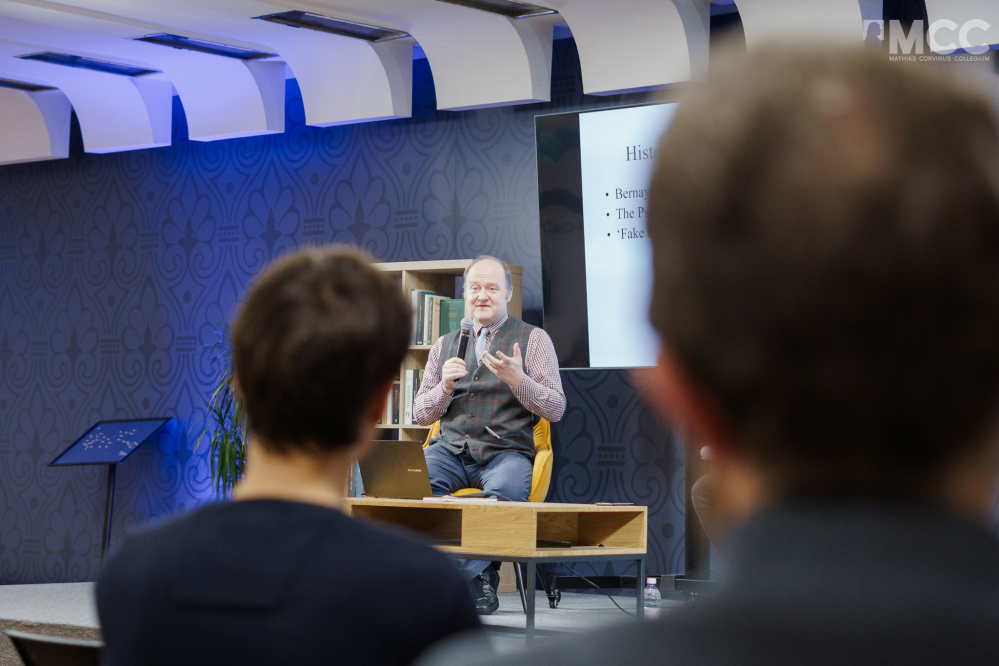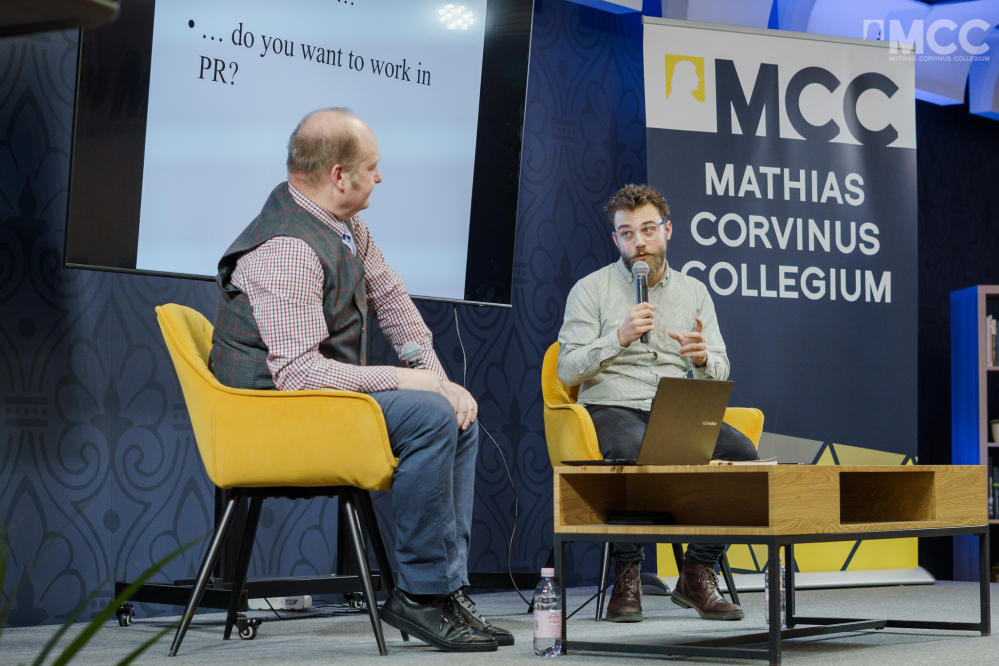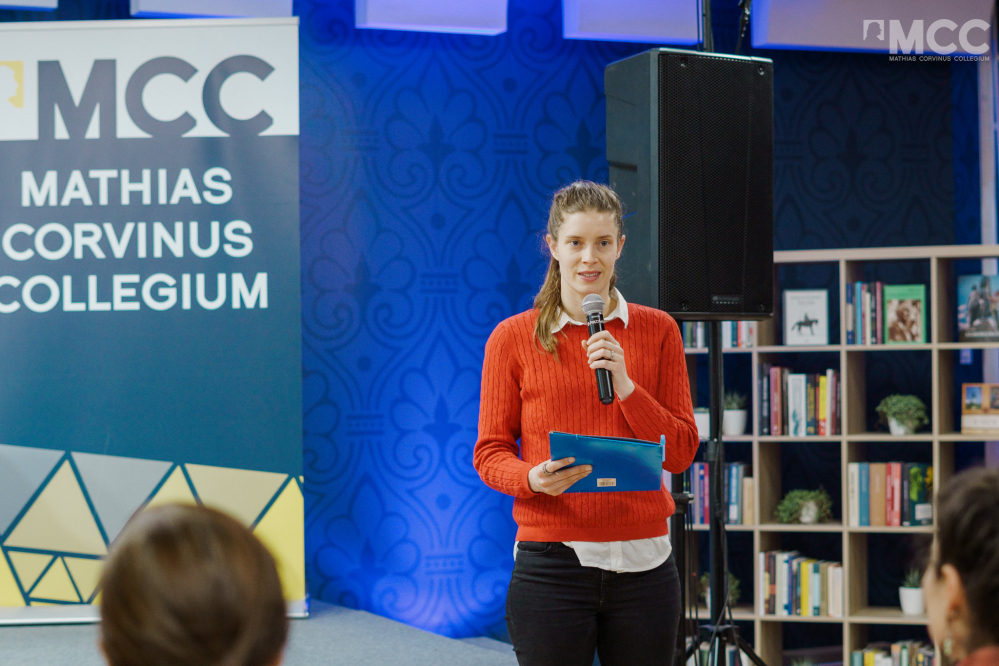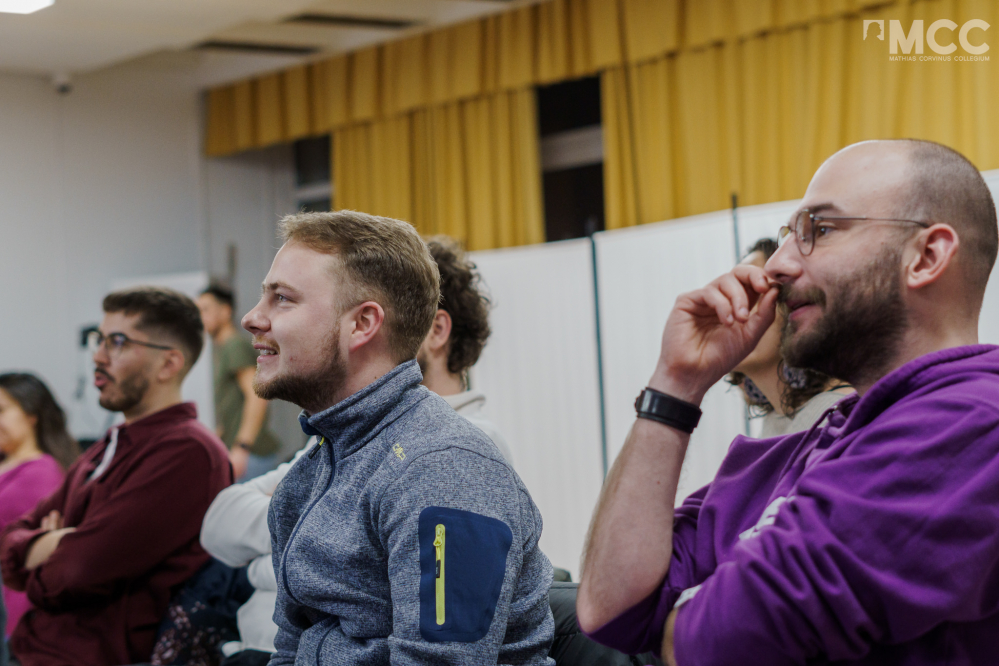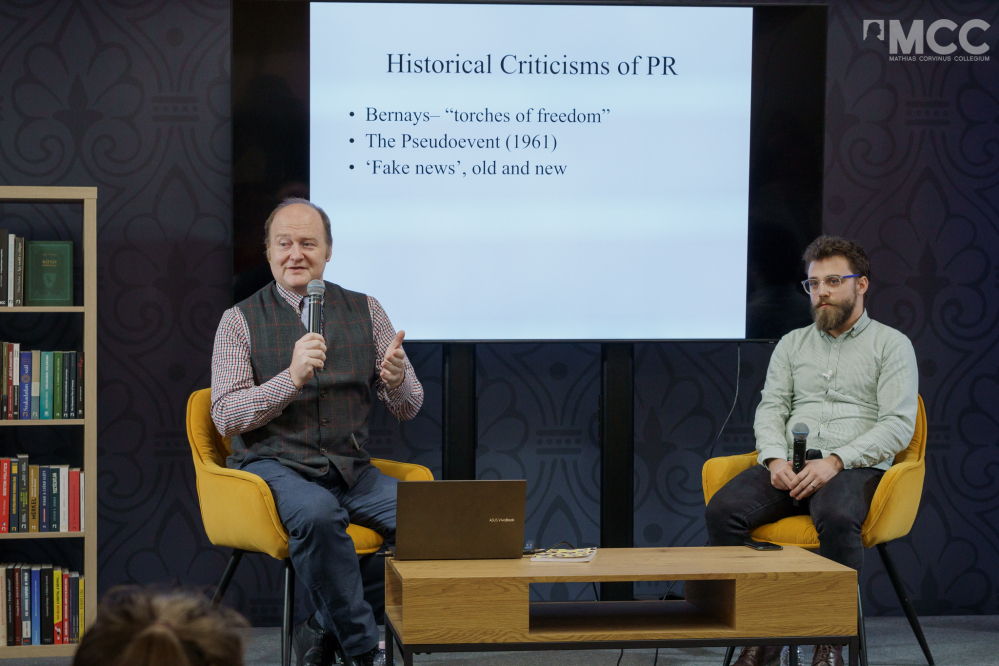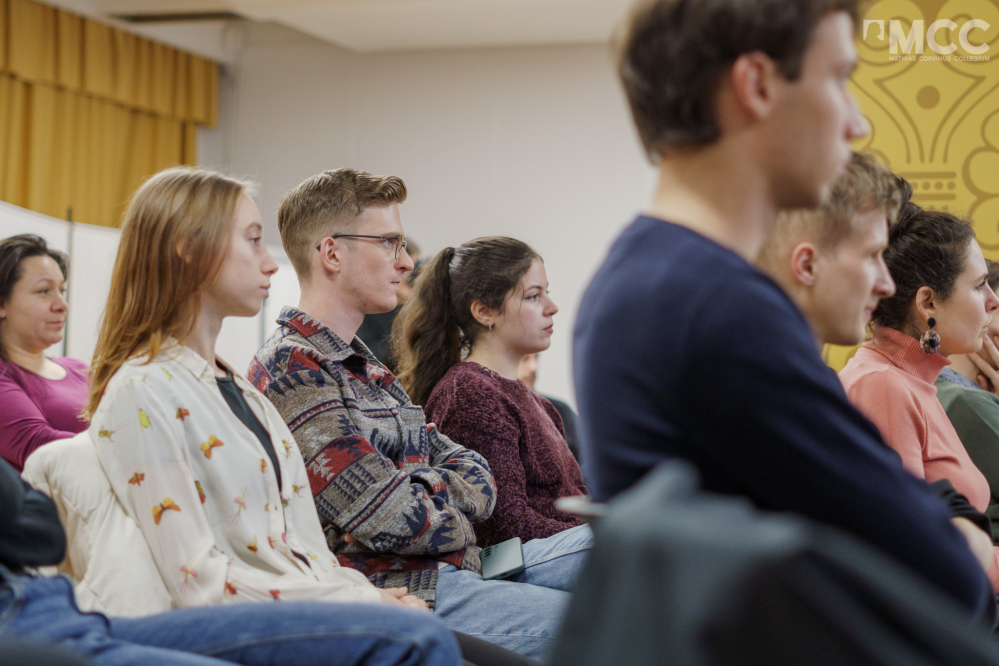Reading time: 3 minutes
Do we really live in a post-truth world? Is the reality itself distorted in the maze of fake news, conspiracy theories, and embellished stories? At the 13 February event of the Transylvania Lectures series, PR expert Dr Graham Barnfield presented the pros and cons of the profession at the MCC center in Kolozsvár/Cluj-Napoca.
Dr Graham Barnfield spent 15 years as lecturer/senior lecturer in journalism at the University of East London. He has worked as a PR consultant and account director in the Arabian Gulf, in European Union science communication, and in Westminster election campaigns. In his presentation, he explained that many people see journalism and public relations as completely separate professions, but in reality, there is a lot of overlap, as both are based on the same fundamental element: good storytelling. The moderator of the discussion was Péter Polacsek, CEO at Diversity Advertising, Head of Communications at VIBE Festival.
The speaker first looked back at some of the great public relations campaigns of history, such as Edward Bernays' initiative: the Torches of Freedom, which took advantage of women's aspirations for a better life to promote smoking in the United States in the early twentieth century. The cigarette was described as a symbol of emancipation and equality with men. They linked smoking to the idea of freedom and convinced more women to smoke, changing the way they viewed it. Bernays' techniques laid the foundations for modern PR, although many consider them manipulative and distorting.
The United States has become the home of the PR industry, but also for most of the critics. In his 1961 book titled The Image, Daniel J. Boorstin wrote about the phenomenon of pseudo-events. These are events planned for the purposes of being covered in the media. By being successfully covered in the media, whatever ideas the event promotes become more real. Graham Barnfield added, PR, like journalism, has two sides: on the one hand, it deserves criticism, but there are many who genuinely want to help.
According to the speaker, a strange relationship has developed between modern journalism and PR: their interests often clash, for example, while PR represents the client and makes him look good, the journalist may be trying to expose his negative side. The idea of the professions shouldn’t overlap, is a strong one, but reality is much more blurry. Lots of journalists use the PR industry to grease the wheels of storytelling. Jobs become more desk-based, and rely more on press releases. PR professionals are treating journalists well and collaborate with them. In theory there’s this big dividing line between the two professions but in reality there is overlapping. Readers tend to treat advertising differently, so genuine publishing is much more valuable to PR professionals. Péter Polacsek added: It is important to know both sides, because knowing the expectations of newspapers can help PR professionals to provide the right content and produce material that benefits both sides.
Since 2016, the issue of fake news and the post-truth world has been high on the public agenda. The term and phenomenon of fake news has been brandished around politics. On the one hand, it refers to made-up, untrue information, and on the other hand, it is used by many (such as Donald Trump) to stigmatise and dismiss disagreement and criticism. Social media is just adding fuel to the fire, as fake news spreads at incredible speed and post-truth makes objective facts less influential on public opinion than arguments based on emotion and personal beliefs. The speaker warned the audience to be cautious, as the rejection of truth leads to parallel narratives and strong social divisions, as we are seeing in Western countries today.
